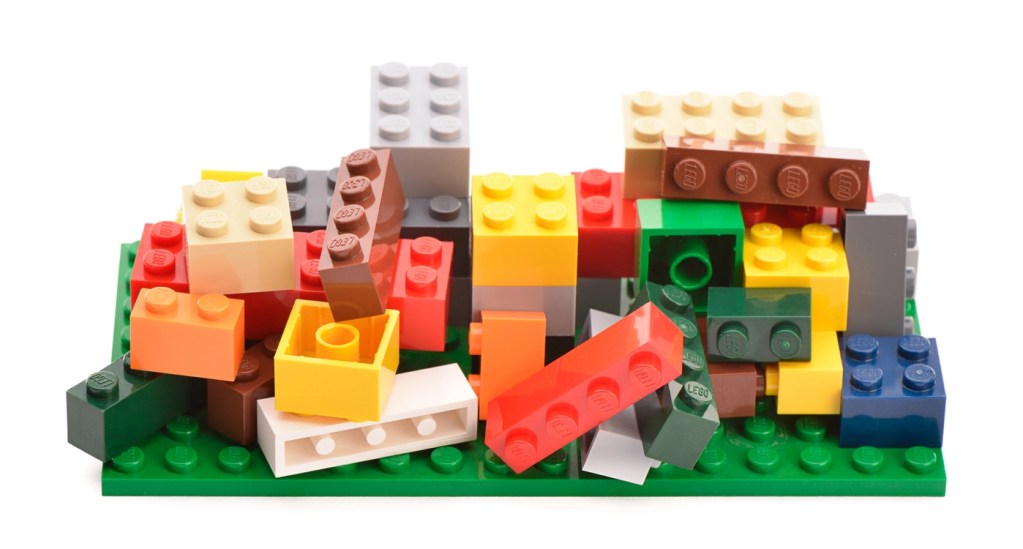Managing a LEGO® collection that spans the expanse of an entire basement can seem impossible, especially as your sets grow in number and complexity. Fear not, fellow builder! Whether you’re a seasoned collector or just starting, these tips will help you keep your collection organized and enjoyable.

Do you ever find yourself searching for that one elusive piece to complete your build? Or maybe your once-neat LEGO® corner has turned into a chaotic mess? Don’t worry—I’ve been there too. Over the years, I’ve honed my strategies for managing my LEGO® collection, and I’m excited to share them with you. From sorting systems to storage solutions, let’s build the world of LEGO® organization!
Step-by-Step Guide to Managing Your LEGO® Collection
Step 1: Sort by LEGO® Piece Type
Begin by sorting your LEGO® pieces by type—bricks, plates, tiles, and specialty pieces. This makes finding the right piece much easier.
Step 2: Color Coding To Help You Manage
Once sorted by type, organize your pieces by color. This not only looks visually pleasing but also speeds up the building process.
Step 3: Storage Bins Are Your Best Friend
Invest in clear storage bins with adjustable dividers. Label each bin to quickly identify its contents. Stackable bins are great for saving space.
Step 4: Create a Dedicated LEGO® Space
Set up a designated area for your LEGO® building. Whether it’s a table or an entire room, having a specific space helps keep your collection contained.
Step 5: Always Display Your Sets
Proudly display your completed sets on shelves. This keeps them out of storage and allows you to enjoy your creations daily.
Step 6: Keep Manuals Organized
Store your LEGO® instruction manuals in a binder or file organizer. This ensures they are easily accessible when you need to rebuild.
Step 7: Digital Inventory Apps And Systems Really Do Help
Use apps or spreadsheets to keep a digital inventory of your collection. This helps track what you have and what you might need for future builds.
Step 8: Regular Maintenance And Cleaning Is A Must
Schedule regular maintenance checks to reorganize and clean your collection. This prevents overwhelming clutter from accumulating.
Step 9: Recycle and Repurpose Old Bricks
If you outgrow certain sets, consider recycling the pieces into new creations or donating them. This keeps your collection fresh and exciting.
Step 10: Join An Online Community
Engage with other LEGO® enthusiasts online or in local clubs. Sharing tips and ideas can inspire new ways to manage and enjoy your collection.
The Pros and Cons of Managing Your LEGO® Collection With These Tips
Pros:
- Easy Access: Organized collections make it easy to find the pieces you need.
- Aesthetic Appeal: A well-organized collection looks visually pleasing.
- Efficient Building: Streamlines the building process, saving time.
- Space Management: Proper storage solutions save space.
- Preservation: Keeps your LEGO® sets and pieces in good condition.
Cons:
- Time-Consuming: Initial sorting and organization can be time-intensive.
- Cost: Quality storage solutions can be expensive.
- Maintenance: Requires regular upkeep to maintain organization.
- Space Requirement: A dedicated space might not be feasible for everyone.
Manage Your LEGO® Collection The Right Way
Managing a LEGO® collection is both an art and a science. It requires a bit of effort and creativity, but the payoff is well worth it for keeping track of your inventory. With these tips, you can transform your collection from a chaotic mess into a well-organized masterpiece, making your building experiences more enjoyable and efficient. Remember, the goal is to enhance your enjoyment of LEGO®, so find a system that works best for you and have fun with it!
So, fellow brick fan, are you ready to manage your LEGO® collection? Implement these tips, and watch as your collection becomes a source of joy and inspiration!
The post 10 Fun and Quirky Tips for Managing Your LEGO® Collection appeared first on Baumlinks.



![Validate my RSS feed [Valid RSS]](https://bricksrss.com/wp-content/uploads/2023/05/valid-rss-rogers.png)